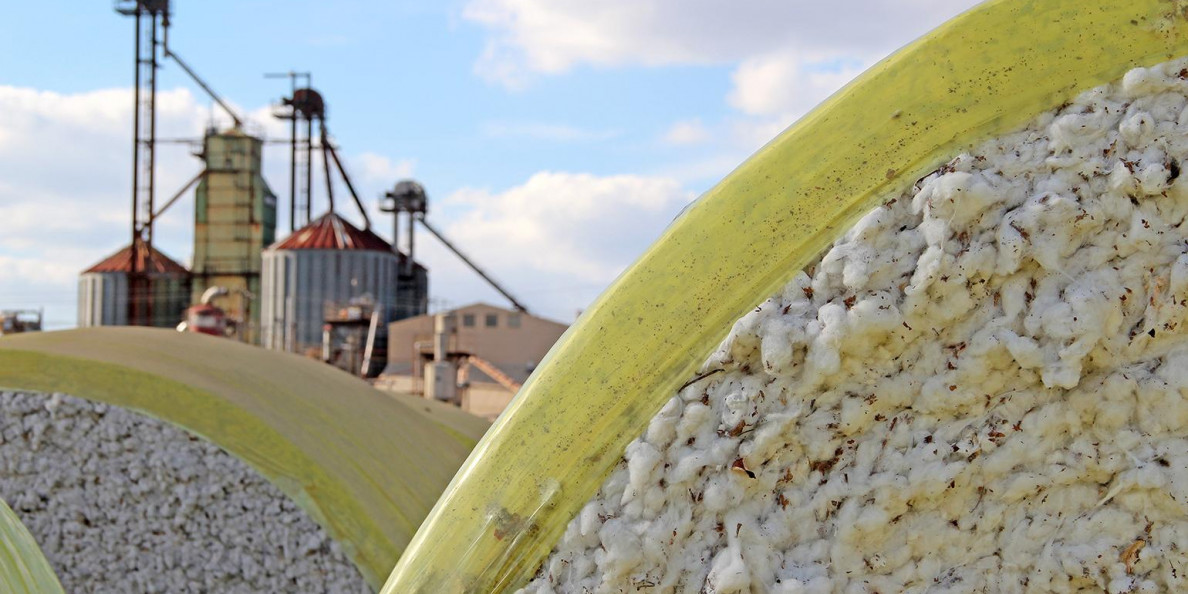With ongoing inflationary pressures and slower economic growth, demand concerns continue to impact the world cotton market. At press time, based on USDA’s October supply and demand projections, world consumption for the current 2023-24 marketing year was estimated to be 115.8 million bales as compared to 110.9 million during the 2022-23 marketing year. However, based on the current demand situation, the expected recovery in 2023-24 world mill use may be a bit optimistic.
U.S. producers reduced cotton acreage in 2023-24 by 25.6%, or 3.5 million acres due to lower prices relative to competing commodities. Although 2023 harvested acreage was higher than last year, the overall U.S. yield per harvested acre was 183 pounds lower than in 2022-23. The 2023-24 Southwest yield per harvested acre was the lowest level since 2003 due to extreme heat and drought conditions during the growing season.
In October, USDA estimated a 2023-24 U.S. crop of 12.8 million bales, which is 1.7 million bales lower than last year and the lowest level in fourteen years.
World production is projected to decline by 3.7 million bales for the 2023-24 marketing year. Reductions in most countries more than offset increases in Brazil, Pakistan, and West Africa. The largest reduction of 3.7 million bales is expected in China, followed by the U.S., Turkey, India, Australia, Greece, Mexico, and Uzbekistan.
In Pakistan, production is expected to increase by 2.6 million bales, bouncing back from the low in 2022. Brazil had the largest increase of 2.8 million bales, with production estimated at 14.6 million bales for 2023-24 — exceeding U.S. production by 1.7 million bales. If realized, this will be the first time that Brazil has produced more cotton than the U.S., resulting in even stronger export competition for the U.S. cotton industry.
U.S. exports are expected to decline to 12.2 million bales for the 2023-24 marketing year. While the U.S. is expected to remain the world’s largest cotton exporter in 2023-24, Brazil isn’t far behind, and combined exports from Brazil and Australia are projected to exceed U.S. exports by 5.3 million bales.
U.S. stocks will remain tight, with a projected ending stock level of 2.8 million bales at the end of the marketing year. While world stocks are projected to be lower in 2023-24 as compared to last year, the stock level would still be the highest since the 2019-20 marketing year.
Looking ahead to the 2024-25 marketing year, the 2024 harvest-time cotton futures price has been trading between 80 and 82 cents per pound over the last month. During the 2023 planting season, average cotton futures prices ranged from 80 to 85 cents per pound. While cotton futures prices are about 2% lower than last year, the prices of competing commodities have declined by a larger amount. As compared to prices during the 2023-24 planting season, 2024 corn harvest-time futures prices have been trading about 11% lower, while soybean prices are about 7% lower.
With lower commodity prices and high input costs, growers will face difficult economic decisions in 2024. Based on the current cotton-to-corn and cotton-to-soybean price ratios, an increase in cotton acreage is likely in 2024-25. However, prices may not be high enough to cover all production expenses, particularly without above average yields. With current deliberations underway for the 2023 farm bill, the importance of a strong safety net cannot be overstated.
Dr. Jody Campiche is Vice President, Economics & Policy Analysis, National Cotton Council
Πηγή: cottongrower.com


